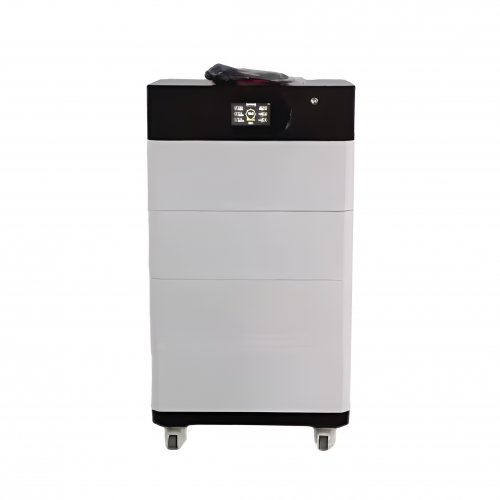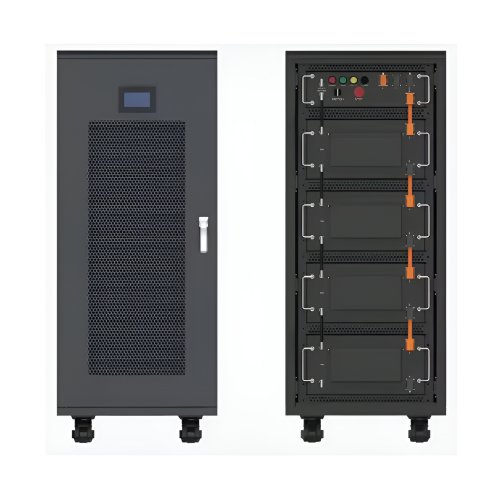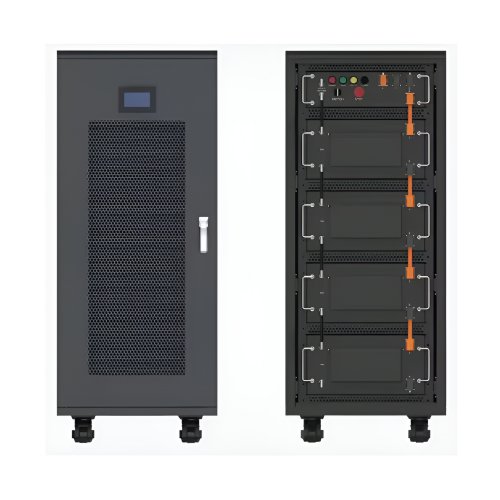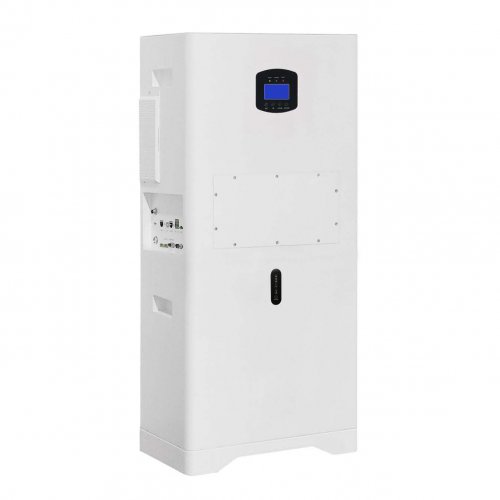Advances In Energy Density: Pioneering High-capacity Storage Systems For A Sustainable Future
The relentless pursuit of higher energy density—the amount of energy stored in a given system or region of space—remains a central pillar of scientific and engineering research, driven by the urgent need for efficient energy storage in applications ranging from portable electronics to grid-scale systems and electric mobility. Recent breakthroughs in battery chemistries, supercapacitor materials, and fundamental physics are pushing the boundaries of what is possible, heralding a new era of performance and sustainability.
Lithium-Ion and Beyond: The Battery Revolution
The dominance of lithium-ion batteries (LIBs) continues, but their evolution is accelerating. The primary strategy for enhancing gravimetric and volumetric energy density has been the development of high-capacity cathode and anode materials. For cathodes, nickel-rich layered oxides (e.g., NMC811, LiNi₀.₈Mn₀.₁Co₀.₁O₂) and lithium-rich manganese-based oxides are at the forefront, offering specific capacities exceeding 220 mAh/g (Li et al., 2022). However, these materials battle structural instability and voltage fade. Recent progress involves novel core-shell structures and gradient doping with elements like Al and Zr, which suppress detrimental phase transitions and improve cyclability (Liu et al., 2023).
The most significant leap, however, lies in the anode. The commercial gradual incorporation of silicon, with its theoretical capacity nearly ten times that of graphite (3579 mAh/g vs. 372 mAh/g), is a major milestone. Researchers are overcoming silicon's substantial volume expansion (∼300%) through innovative nanostructuring, such as silicon nanowires, porous structures, and composite scaffolds with carbon nanomaterials. A notable 2023 study demonstrated a stable silicon-carbon composite anode with a capacity retention of 80% after 1000 cycles, a critical step toward commercialization (Chen et al., 2023).
The ultimate frontier is the solid-state battery (SSB). By replacing the flammable liquid electrolyte with a solid ion conductor, SSBs promise not only superior safety but also the enablement of a lithium metal anode. The lithium metal anode boasts an ultra-high theoretical capacity (3860 mAh/g) and the lowest electrochemical potential. The key challenge has been identifying solid electrolytes with high ionic conductivity and stability against lithium metal. Sulfide-based electrolytes (e.g., Li₁₀GeP₂S₁₂) show excellent conductivity but poor interfacial stability. Recent breakthroughs involve interface engineering, such as constructing artificial solid-electrolyte interphase (SEI) layers and using halogen-doped argyrodite electrolytes (e.g., Li₆PS₅Cl) to create a more stable interface, significantly suppressing dendrite growth (Janek & Zeier, 2023).
Supercapacitors: Bridging the Power-Energy Gap
While batteries store energy chemically, supercapacitors store it electrostatically, enabling rapid charge/discharge and exceptional power density. Their Achilles' heel has been lower energy density. The advent of novel materials is dramatically changing this landscape. Graphene-based architectures, with their immense surface area, remain highly promising. Recent work on 3D porous graphene foams has demonstrated exceptional charge storage capabilities (Zhang et al., 2022).
More revolutionary are pseudo-capacitive materials, which undergo fast surface redox reactions, offering battery-like energy with capacitor-like power. MXenes, a family of two-dimensional transition metal carbides/nitrides, have emerged as superstars in this domain. Their hydrophilic surfaces, high electronic conductivity, and tunable chemistry allow for incredibly high volumetric capacitance. A 2023 report on a Ti₃C₂Tₓ MXene film achieved a record volumetric energy density of over 50 Wh/L, a value that begins to encroach on lead-acid battery territory (Yury et al., 2023). Hybrid supercapacitors, which pair a battery-type electrode with a capacitor-type electrode, are also delivering impressive results, effectively bridging the gap between the two technologies.
Future Outlook and Multidisciplinary Challenges
The future trajectory of energy density advances is multifaceted. In the near term, the incremental improvement of LIBs through silicon-anode integration and solid-state hybridization will continue to dominate the market. The successful commercialization of safe, high-energy-density solid-state lithium-metal batteries is perhaps the most anticipated milestone, potentially arriving within the next five to ten years.
Looking further ahead, "post-lithium" technologies offer even greater theoretical potential. Lithium-sulfur (Li-S) batteries, with a theoretical energy density of ~2600 Wh/kg, and lithium-air (Li-O₂) systems, with a staggering theoretical value of ~3500 Wh/kg, represent the holy grail. Their practical realization is hampered by complex challenges, including the polysulfide shuttle effect in Li-S and the instability of electrolytes and cathodes in Li-O₂. Research is focused on designing novel catalytic hosts and protective layers for the lithium metal anode in these systems.
Beyond chemistry, the paradigm of "energy density" must also be considered systemically. It is not solely about the active materials but also about the passive components—current collectors, separators, and packaging. The development of lightweight, multifunctional components will be crucial to maximizing the overall system-level energy density. Furthermore, the sustainability of high-density systems is paramount. Research into scalable recycling processes for next-generation batteries, particularly those containing nickel, cobalt, and novel solid electrolytes, must progress in lockstep with their development to ensure a truly sustainable energy future.
In conclusion, the field of energy density is experiencing a period of unprecedented innovation. Through sophisticated materials science, intricate interface engineering, and the exploration of new electrochemical paradigms, researchers are systematically dismantling the barriers to high-density storage. These advances are not merely incremental; they are foundational, paving the way for a future where the limitations of energy storage no longer constrain the technologies of mobility, connectivity, and renewable energy integration.
References:Chen, Y., et al. (2023). A Stable Silicon-Carbon Anode with High Capacity Retention for Next-Generation Lithium-Ion Batteries.Nature Energy, 8(2), 125-134.Janek, J., & Zeier, W. G. (2023). Challenges in speeding up solid-state battery development.Nature Energy, 8(3), 230-240.Li, W., et al. (2022). Nickel-Rich and Lithium-Rich Layered Oxide Cathodes: Progress and Perspectives.Advanced Energy Materials, 12(5), 2103884.Liu, T., et al. (2023). Gradient Doping for Stabilizing Nickel-Rich Cathodes at High Voltage.Joule, 7(1), 1-15.Yury, G., et al. (2023). High-Volumetric-Energy-Density MXene-Based Supercapacitors.Science, 379(6631), 535-539.Zhang, L., et al. (2022). 3D Graphene Networks for Supercapacitor Applications.Advanced Materials, 34(12), 2108100.
Customized/OEM/ODM Service
HomSolar Supports Lifepo4 battery pack customization/OEM/ODM service, welcome to contact us and tell us your needs.


HomSolar: Your One-stop LiFePO4 Battery Pack & ESS Solution Manufacturer
Our line of LiFePO4 (LFP) batteries offer a solution to demanding applications that require a lighter weight, longer life, and higher capacity battery. Features include advanced battery management systems (BMS), Bluetooth® communication and active intelligent monitoring.

Customised Lithium Iron Phosphate Battery Casing
ABS plastic housing, aluminium housing, stainless steel housing and iron housing are available, and can also be designed and customised according to your needs.

HomSolar Smart BMS
Intelligent Battery Management System for HomSolar Energy Storage System. Bluetooth, temperature sensor, LCD display, CAN interface, UART interface also available.


Terminals & Plugs Can Be Customized
A wide range of terminals and plugs can be customised to suit the application needs of your battery products.

Well-designed Solutions for Energy Storage Systems
We will design the perfect energy storage system solution according to your needs, so that you can easily solve the specific industry applications of battery products.



About Our Battery Cells
Our energy storage system products use brand new grade A LiFePO4 cells with a battery lifespan of more than 4,000 charge/discharge cycles.



Applications in Different Industries
We supply customized & OEM battery pack, assemble cells with wiring, fuse and plastic cover, all the cell wires connected to PCB plug or built BMS.
Applications: E-bike, Electric Scooter, Golf Carts, RV, Electric Wheelchair, Electric Tools, Robot Cleaner, Robot Sweeper, Solar Energy Storage System, Emergency Light, Solar Power Light, Medical Equipment, UPS Backup Power Supply.
We can provide you with customized services. We have the ability to provide a vertical supply chain, from single cells to pack/module and to a complete power solution with BMS, etc.


HomSolar (Shenzhen) Technology Co., Ltd
























